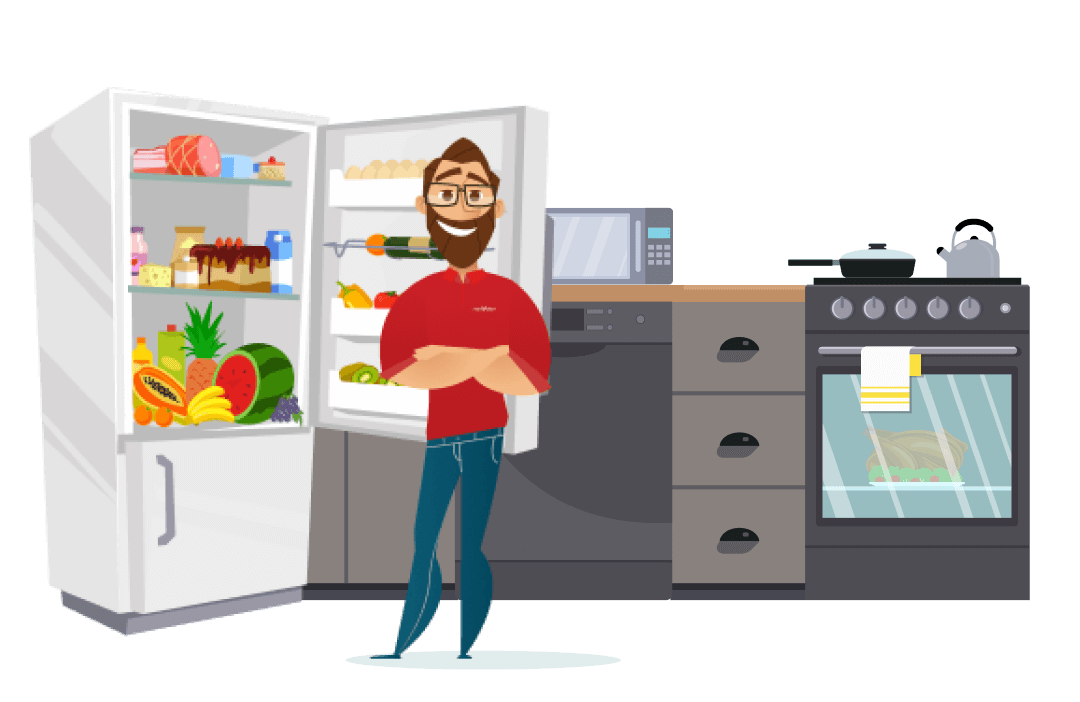Shop the big Boxing Day Microwave Sale
The Boxing Day Microwave Sale is on! The lowest prices online or in-store. Limited time only!

Microwave Buying Guide
Check out our handy Microwave Buying Guide, with all the best tips and advice plus all the latest products from leading brands!
Learn moreFAQs
Yes, microwaves are safe to use when used correctly. Follow the manufacturer's instructions and avoid heating certain materials, such as metal, plastic containers not labeled as microwave-safe, or any materials that may release harmful chemicals when heated. It's also important to use microwave-safe cookware and avoid overheating liquids to prevent burns or spills.
To learn all you need to know, check out our handy Microwave Buying Guide.
No, you should not use metal containers or aluminum foil in a microwave. Metal reflects the microwaves, which can cause sparks and potentially damage the appliance. It's best to use microwave-safe containers made of glass, ceramic, or microwave-safe plastic for safe and efficient cooking.
To prevent food splatters, cover dishes with a microwave-safe lid or microwave-safe paper towel. This helps trap steam and prevent messy splashes inside the microwave. You can also reduce the power level for foods prone to splattering.
A microwave oven heats food using electromagnetic waves, specifically microwaves. These waves cause water molecules in the food to vibrate, generating heat that cooks or warms the food from the inside out. This process is quick and efficient, making microwave ovens a convenient kitchen tool.
Ideally, you should clean your microwave once a week or as needed to prevent food buildup and odors. The best way to clean it is to wipe down the interior with a damp cloth and mild detergent. For tougher stains, you can heat a bowl of water with lemon slices inside the microwave for a few minutes to loosen grime before wiping it down.
Only use plastic containers that are labeled as microwave-safe. Some plastics can melt or release harmful chemicals when heated. Check for a microwave-safe label or symbol on the container to ensure it’s safe to use.
Yes, it’s generally safe to stand in front of a microwave while it’s operating. Microwave ovens are designed with safety features that prevent radiation from leaking out. As long as the door seals properly and the microwave is in good working condition, there’s no risk to your health.
Microwave wattage refers to the power output of the microwave. Higher wattage means faster cooking times and more efficient heating. For example, an 800-watt microwave will cook food slower than a 1000-watt model. It’s important to adjust cooking times based on your microwave’s wattage.
Check out our Microwave Buying Guide to see which microwave suits your needs.
Materials that are safe to use in the microwave include microwave-safe glass, ceramic, and certain plastics labeled as microwave-safe. Avoid using metal, aluminium foil, or any containers with metallic trim, as these can cause sparks and potentially damage the microwave.
If your microwave sparks or makes unusual noises, stop it immediately and unplug it. This could indicate a problem, such as metal being used inside or a malfunction. It’s best to have the microwave inspected by a professional before using it again.
If your door is no longer functioning theres a chance microwave radiation can escape, posing a significant risk to health. Check your microwave to ensure the seal is in tact, if you notice damage it's time for a replacement.
Uneven cooking in a microwave can happen because microwaves heat the outer layers of food first, which can result in hot spots. Food placement, shape, and density can also affect cooking uniformity. Stirring food halfway through cooking or using a microwave with a rotating turntable can help achieve more even results.








